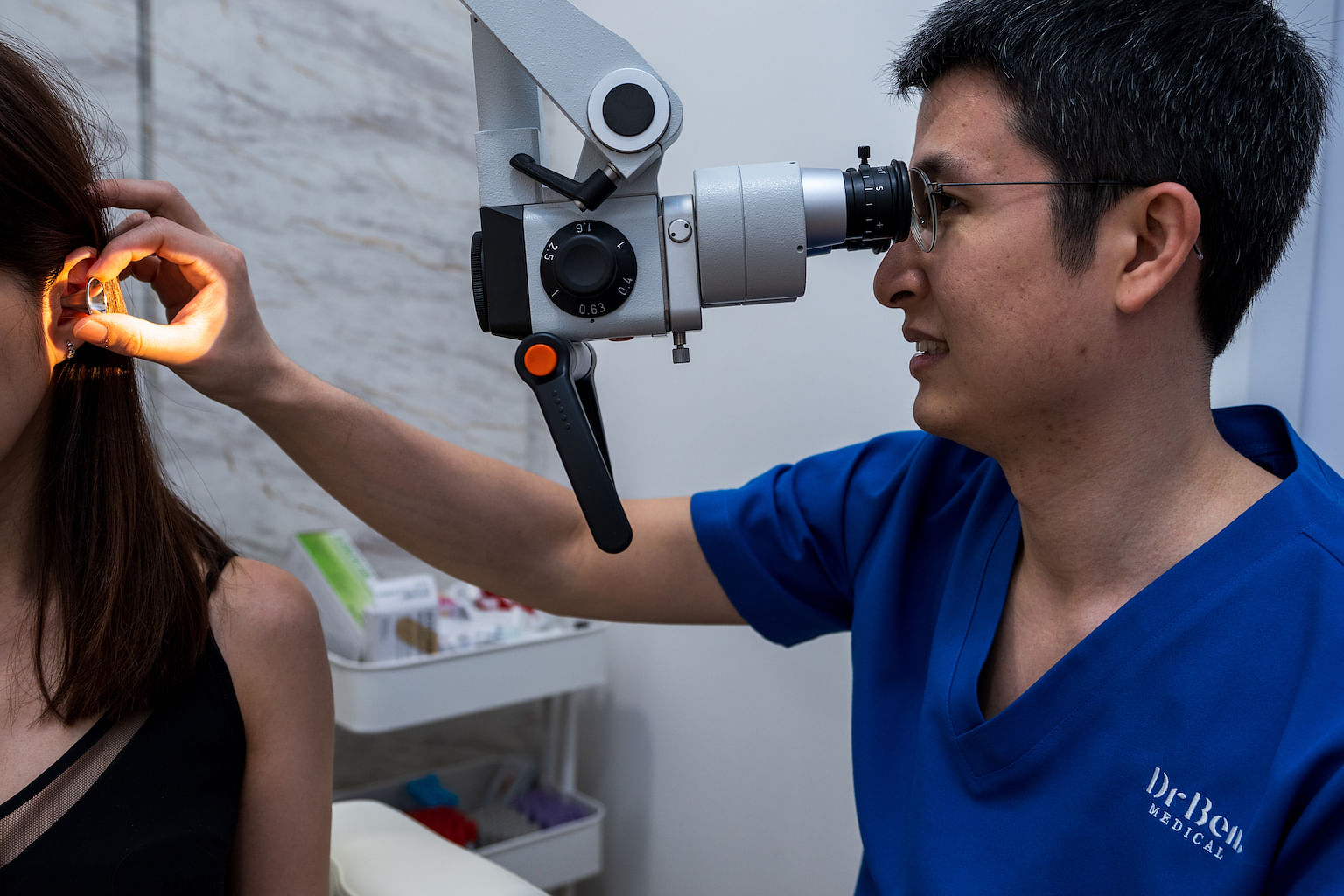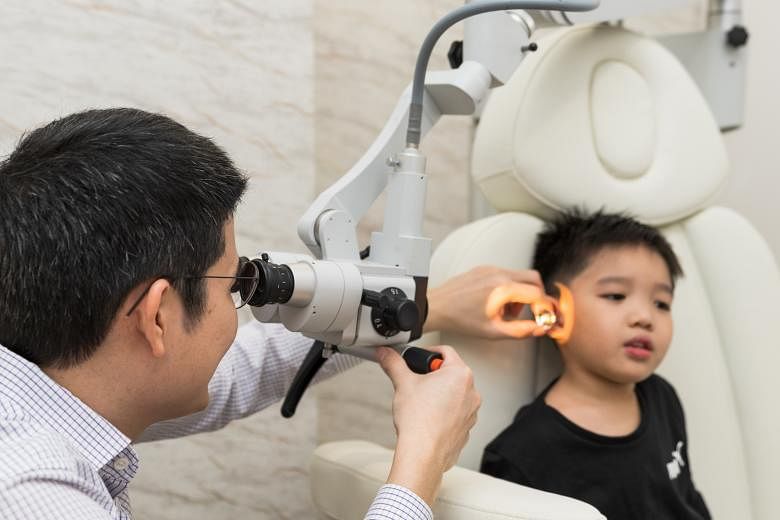If you are experiencing symptoms like ear discomfort, loss of hearing (you often ask others to repeat themselves or have to turn up the volume of your audio devices), ear discharge, tinnitus or ear pain, you could have a problem linked to the build-up of earwax.
In general, people don't really need to worry about earwax production and removal as our ears are usually capable of self-clearing the earwax, says Dr Benjamin Loh of Dr Ben Medical. However, common activities like swimming and wearing earpieces for prolonged periods of time can hinder this self-cleaning action and contribute to earwax build-up. Dr Loh says that the lifestyle changes brought about by the Covid-19 pandemic have a role to play as well.
"We have been seeing more people with earwax build-up as everyone has been exercising more during this period and perspiration may lead to increased ear wax production. Nevertheless, the benefits of exercise far outweigh the risk of earwax build-up. In addition, people are also using more earphones for tele- and video-communications at work - extended usage of these affect earwax clearance and might cause noise-induced hearing loss," says Dr Loh.
Some people tend to produce more earwax than others, depending on factors such as age and environment. The elderly, for example, tend to be at risk of producing hard impacted earwax.
But you should not attempt to remove earwax by yourself, warns Dr Loh. Here, he gives the lowdown on common myths about earwax and how it can be safely removed.

Myth 1: Visible ear wax is a sign of poor hygiene
Ear wax is a natural substance secreted by the body, and "plays very useful roles as a natural moisturiser, to trap dirt and dust, and protect the ear from bacteria and other infectious organisms", says Dr Loh.
"In general, we don't really need to worry about earwax removal," says Dr Loh. "We don't have to wash our ears or flush them with water while showering. In fact, this will only increase the risk of having an ear infection, not to mention the possibility of pushing the wax deeper into the ear."
Myth 2: It's okay to clean out earwax with cotton buds
People often try to remove earwax by digging the ears with a cotton bud or metal ear digger, or washing inside the ears with water. These actions are harmful because they increase the risk of ear infection and also cause the ear wax to go deeper into the ear, Dr Loh explains.
Ear candling is another much-touted method for removing ear wax, but there is minimal evidence to prove that it to be effective, adds Dr Loh. He also warns that this may even lead to burns. He says: "I have seen patients who got injuries through ear candling."
Professional methods of earwax removal include ear syringing, in which a syringe is used to flush the ear with water, but this comes with some disadvantages, says Dr Loh. "There is a possibility of causing injuries and infections to the ear or even possibly pushing the wax deeper in the ear canal. It is also not recommended for people who suffer from middle ear complaints, existing ear infections, or those who have a perforated eardrum or previous ear surgery."
Another way of removing earwax is through the technique of aural toilet microsuction. This technique uses a microsuction device to remove the ear wax like a mini vacuum, aided by a ear microscope through which the doctor gets a clear view of the ear canal. This facilitates the thorough cleaning of earwax with little to no discomfort. The doctor has clear visualisation to remove the earwax safely and is able to free up both hands to use the required tools. This method is used for removing not only impacted earwax but also abnormal ear discharge and foreign bodies.
Dr Loh says, "The procedure takes about 10 to 15 minutes and is suitable to be used on both adults and children."

Myth 3: All ear blockages are caused by earwax
Dr Loh says one of the most common misconceptions is that people attribute all blocked ear sensations to impacted earwax.
However, blocked ear sensations could be caused by viral infections or a blockage in another part of the ear or nose region. "So always speak to your doctor when in doubt. Please do not ignore your symptoms," advises Dr Loh.
Microsuction can also be used to diagnose problems causing blocked ear sensations. The clear visibility of the entire ear drum afforded by the ear microscope in the device makes it an effective diagnostic tool for doctors. Dr Loh adds: "It can also help clear any abnormal discharges in the event of an infection in the ear canal to allow medication (ear drops) to be absorbed into the infected region."
The key to good ear health
Regardless, the first step to good ear health is awareness and practising good habits such as wearing ear plugs when swimming or showering to keep the ears dry, and avoiding wearing earphones for prolonged periods of time. But most of all, "never stick anything into the ear, including cotton buds", says Dr Loh.
For more information, visit www.drbenmedical.sg/ear-wax-removal-singapore


